
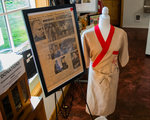
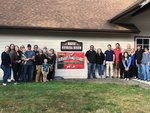
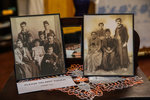

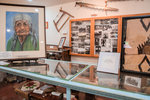

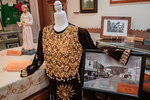



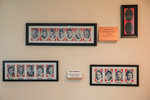
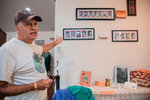

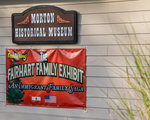
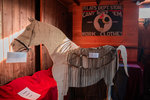
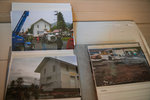
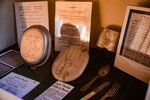
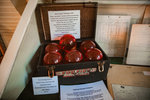
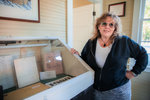
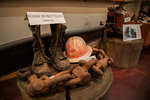
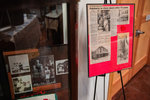
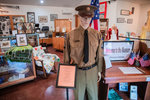
Elee Fairhart has searched several times, unsuccessfully, for another man in America with his name. The Morton resident who made his career in physical therapy has a backstory as unique as his French-Lebanese name, and it’s now on display in the Morton Historical Museum.
The Fairhart family emigrated from Lebanon to America through Ellis Island and took a train through Canada to Tacoma, joining a community of Lebanese and Syrian Americans.
“It's pretty courageous to think that a man and his wife grabbed what they could carry in their hands and then jumped on the boat,” Elee Fairhart said.
His grandfather, Esper Fairhart — who first came to America in 1897, went back to Lebanon in 1905 and returned to America with his wife, Annie, in 1906 — left Tacoma and became a merchant, moving between logging camps and selling wares to the families there. While living in Tenino, Esper Fairhart and his wife, Annie, had the first three of their nine children, Madeline, Messina and Marcel, Elee’s father.
By 1920, Esper Fairhart and his brother Bill Fairhart — who had registered for the WWI draft — had purchased a grocery store in Morton in 1912 as Annie and Esper were raising a family of six children. Sometime in that decade, Esper and Annie moved back to Lebanon upon word that Esper’s father was ill. The father, Melhim, had passed away by the time the family made it back.
In Lebanon, Esper and Annie had three more children. Annie passed away in 1934 at the age of 42.
All this time, “Uncle” Bill Fairhart was still running the store, despite the Great Depression bringing challenging times to the community. According to many accounts from local families, Bill Fairhart had a motto that no one in Morton would go hungry as long as he had food on his shelves. Bill Fairhart would extend lines of credit to families who wouldn’t otherwise afford food.
Eventually, uncle Bill Fairhart wrote to Esper encouraging him to send his now adult children to come back to Morton to work in the store. In 1938, Marcel arrived in New York and made his way to Morton.
In 1942, Marcel was enlisted in the U.S. Army, and Bill Fairhart again registered for the draft in the second World War.
Inspired by tales of uncle Bill Fairhart’s generosity, Morton Historical Museum Curator Becky Starr-Justice asked the living Fairharts if she could feature their family as the first in a series of exhibits on local families. Using heirlooms from the store and the Fairhart homes, the museum is decked out with photos of the Lebanese family, their creations, possessions and military uniforms. The women of the Fairhart family were expert seamstresses, and the intricacy of the dresses inside the museum makes it hard to believe they were created by hand long ago.
“(Starr-Justice) is tireless. She called us on the phone and said this is her vision. This is what she has in mind. And she has been like a firecracker,” Elee Fairhart said, adding later, “We’re honored.”
Beginning with the next five months showing the Fairharts as merchants, Starr-Justice intends to create exhibits on the various careers that built Morton, including loggers and homesteaders. The museum always has a showcase on indigenious peoples and on locals who served in the military.
On Saturday, Sept. 17, the grand opening of the new exhibit hosted over 20 Fairhart family members, who traveled from all over to see the artifacts of their history. Elee Fairhart said the process was one of self discovery, with himself and his siblings learning much more about their family history than they’d known. About 100 people showed up to the museum on the exhibit’s opening day, Starr-Justice said.
After the Morton Train Depot was picked up and moved down the street in 2005, the museum was run by the Morton Historical Society, formerly known as the Cowlitz River Valley Historical Society.
The nonprofit has been picking up steam in recent months after Starr-Justice began volunteering there. She works as a florist and was brought on for her design skills and fascination with local history.
“We've got too much rich history to just let it die,” she said, mentioning that her next project will be to open the train depot as an ongoing exhibit itself. “I want it to be open and I want it to be a showplace. Eventually it will be as wonderful as the museum is. It just takes time.”
The museum, which is also home of the Morton Visitors Center, is open most days from at least 10 a.m. to 3 p.m. and often stays open until 5 p.m. It is closed on Sundays during the winter and is often open until 5 p.m. It is located at 194 Main Ave., Morton. To learn more, visit its Facebook at https://www.facebook.com/mortonvisitorcenter.